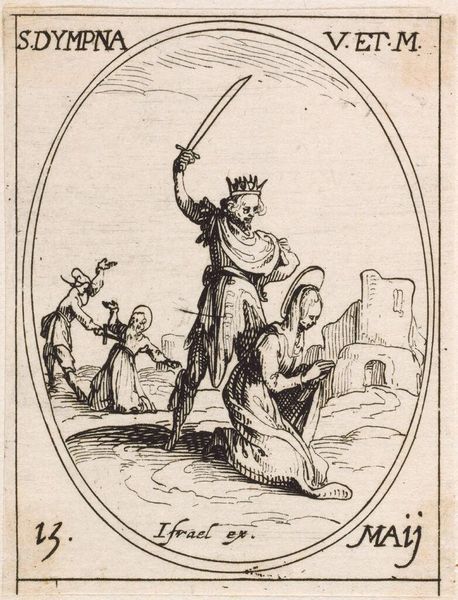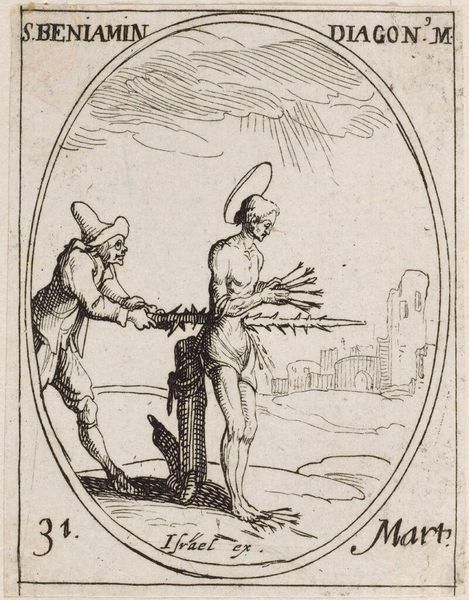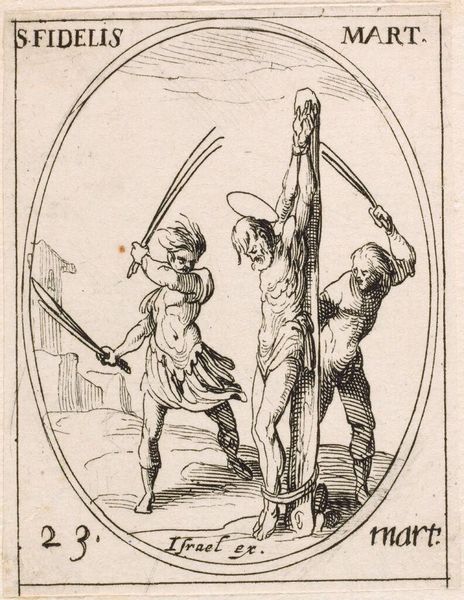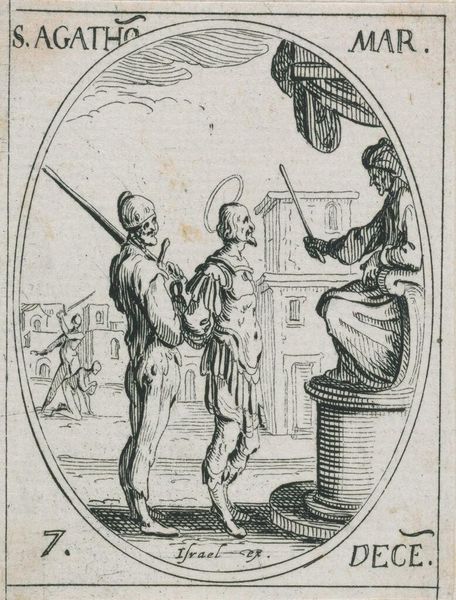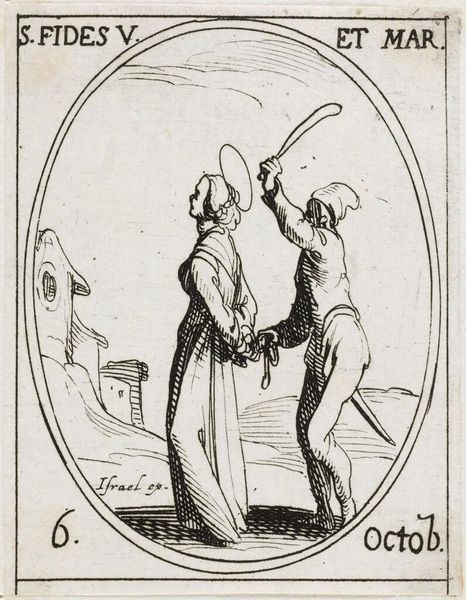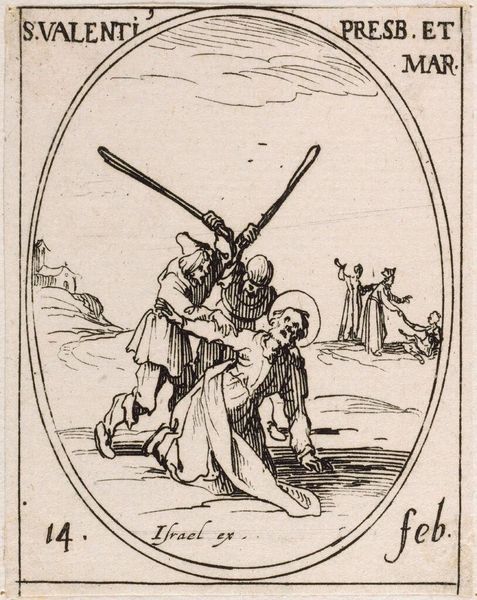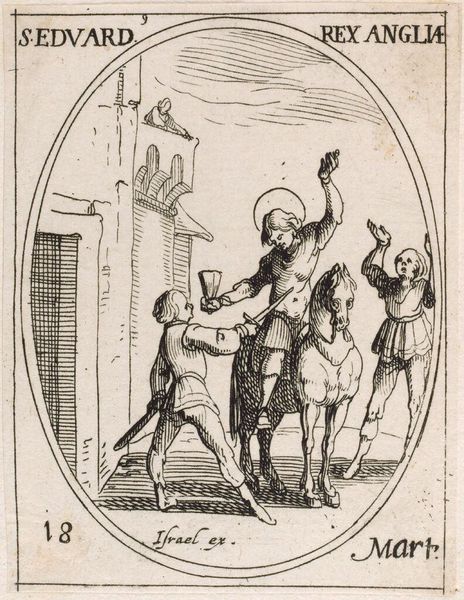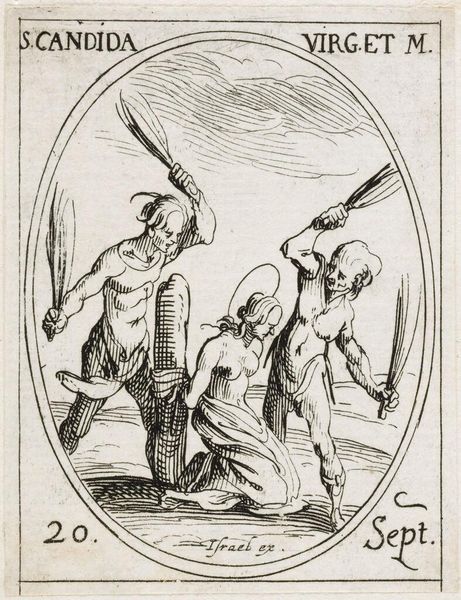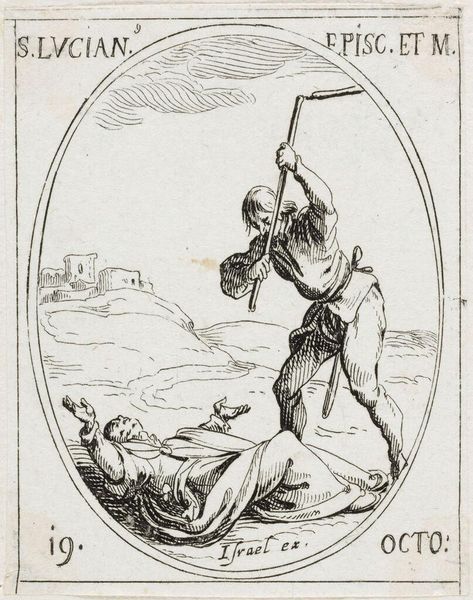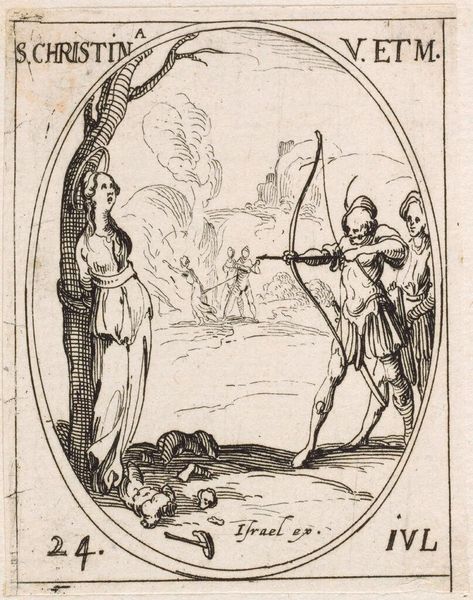
Dimensions: 7.6 x 4.9 cm (3 x 1 15/16 in.)
Copyright: CC0 1.0
Curator: This is Jacques Callot’s "Saint Hiacynth," a small but potent etching. It's difficult not to feel revulsion when looking at this depiction of violence. Editor: Yes, the print's stark lines amplify the brutality, but the clear craftsmanship is equally apparent. The act of creating something so precise, to depict such torture, is striking. What materials and labor were involved? Curator: Callot, in his depiction, draws upon martyrologies to illustrate the painful death of Saint Hyacinth of Caesarea, who was tortured for refusing to participate in pagan rituals. Consider the cultural context of religious persecution here. Editor: Certainly. It's also worth noting the contrast: the active violence contrasted with the body resting in the background. We might also think about Callot’s use of etching, allowing for mass production and distribution of this image, its availability, and impact. Curator: Absolutely, the performative aspect of both the violence and Callot’s representation of it cannot be ignored. Editor: These considerations shed light on the intersection of materials, process, and power, don't they? Curator: Indeed, it highlights the way art can reflect and shape deeply ingrained biases within a given society. Editor: Thinking about the labor and circulation of such an image allows a deeper understanding.
Comments
No comments
Be the first to comment and join the conversation on the ultimate creative platform.
